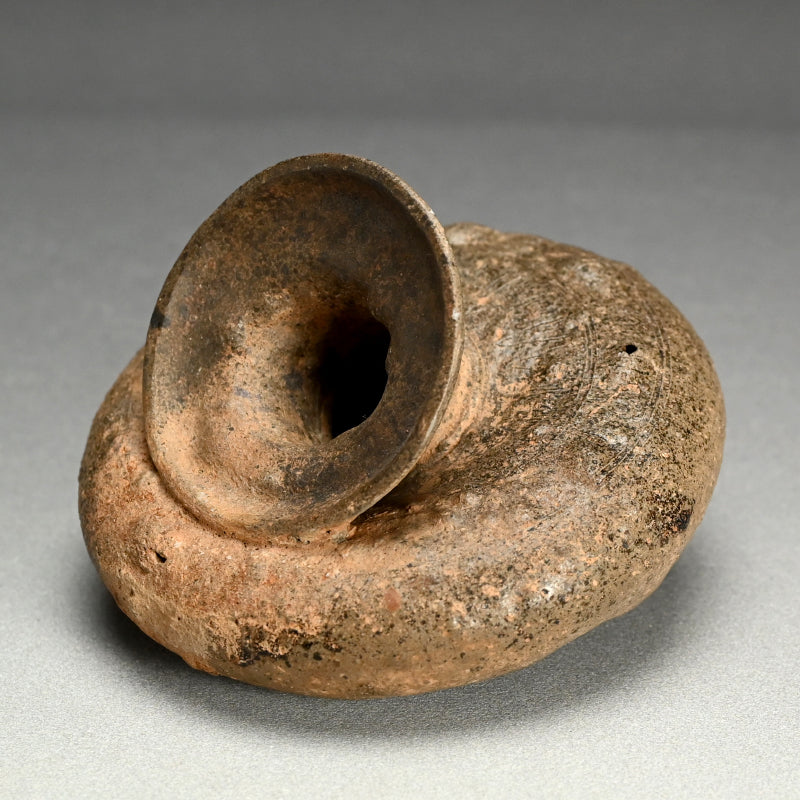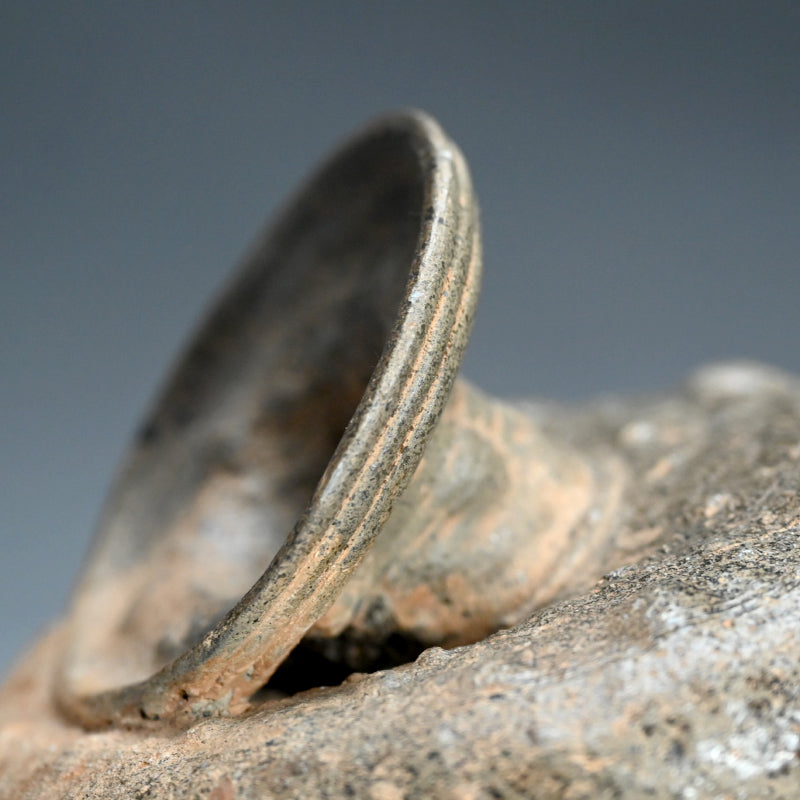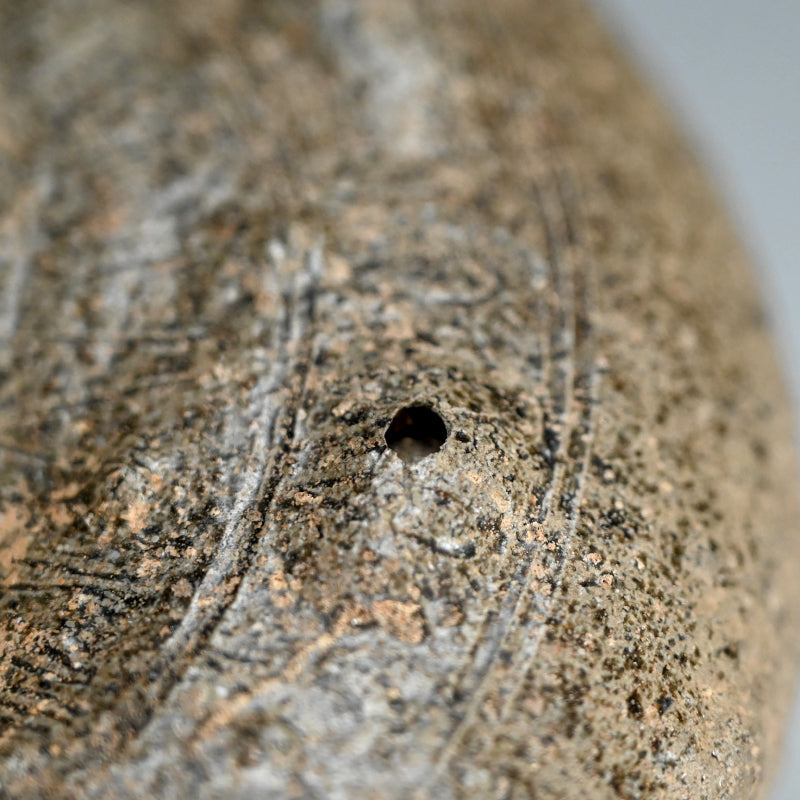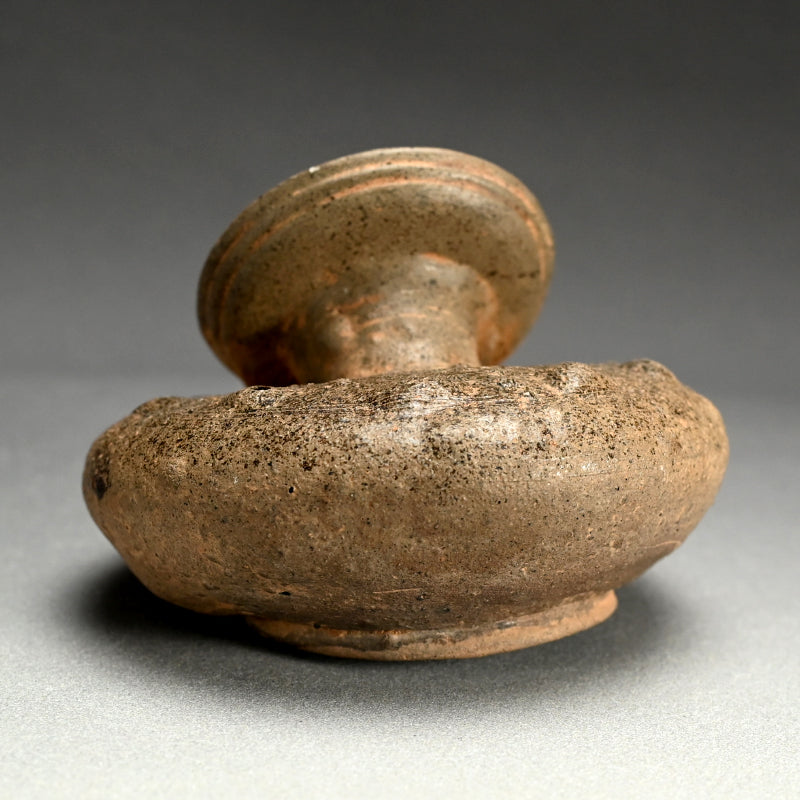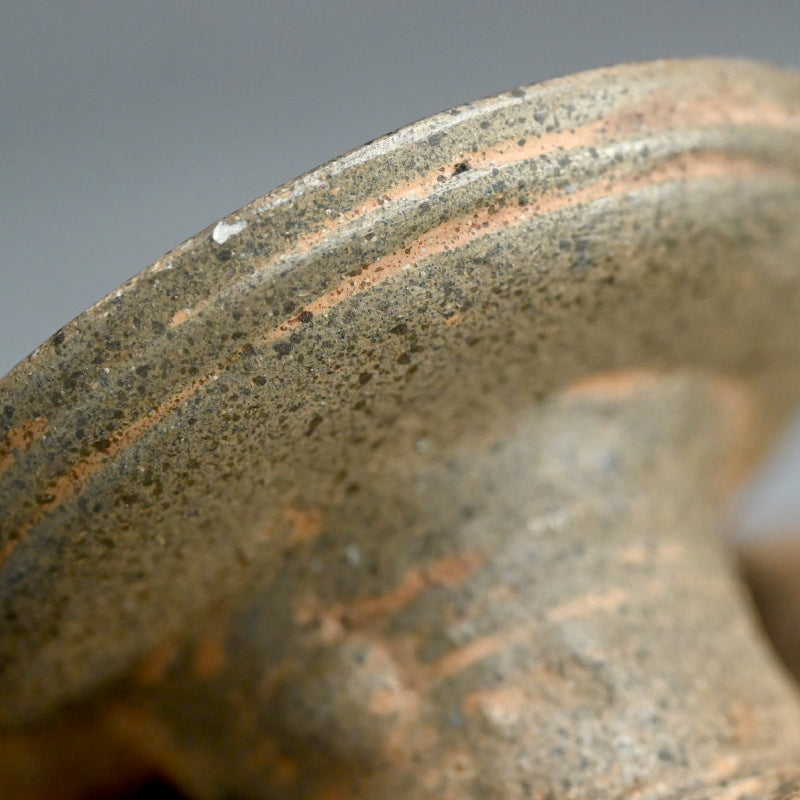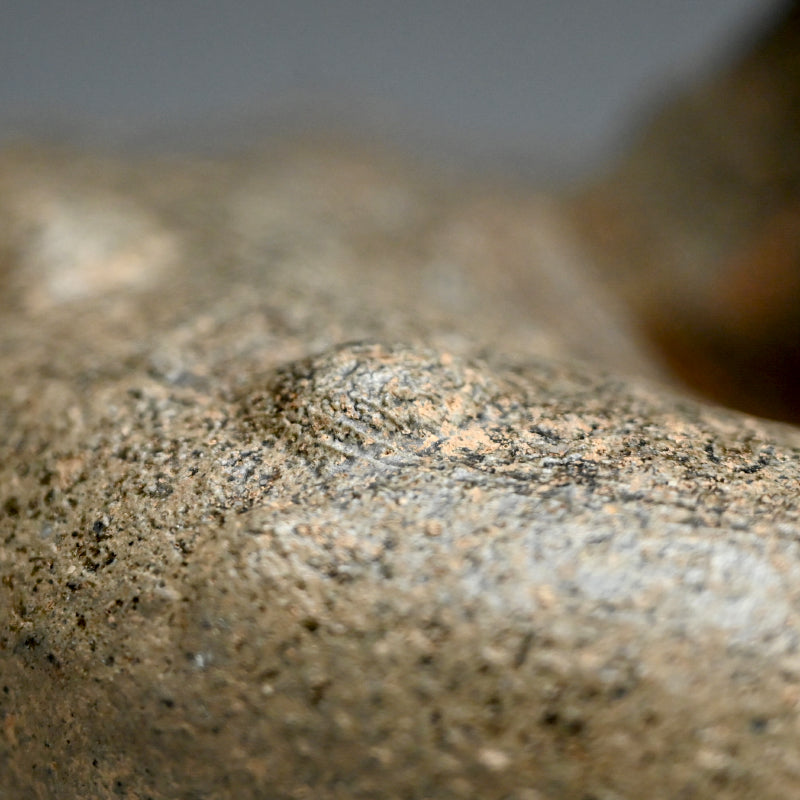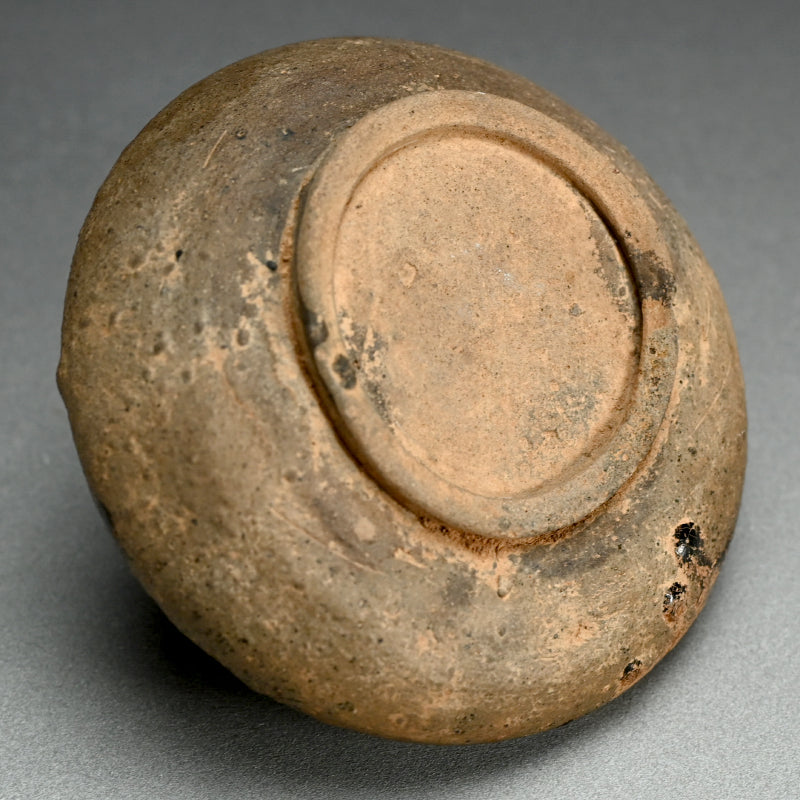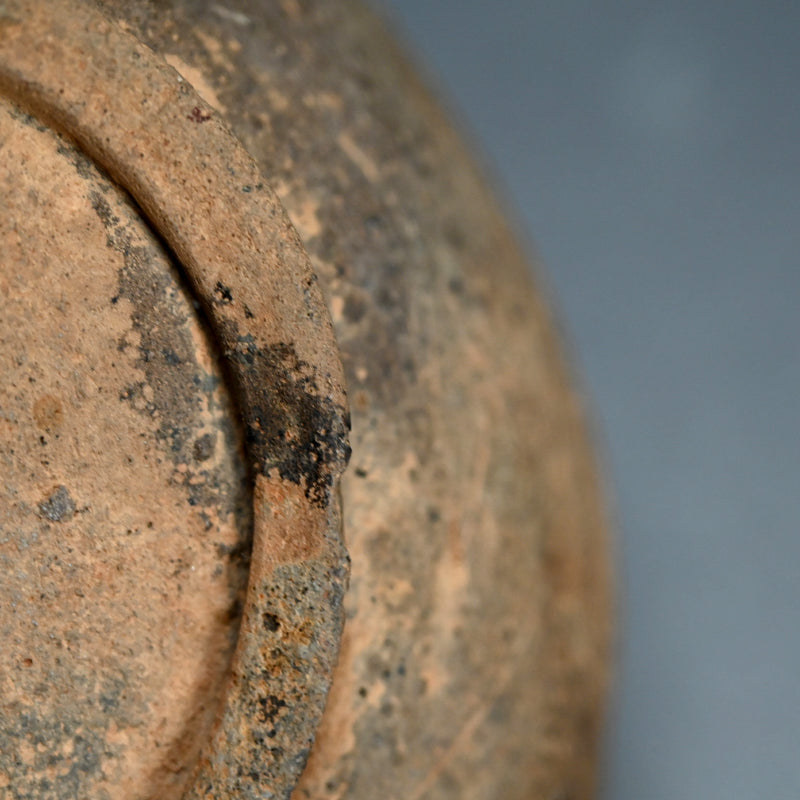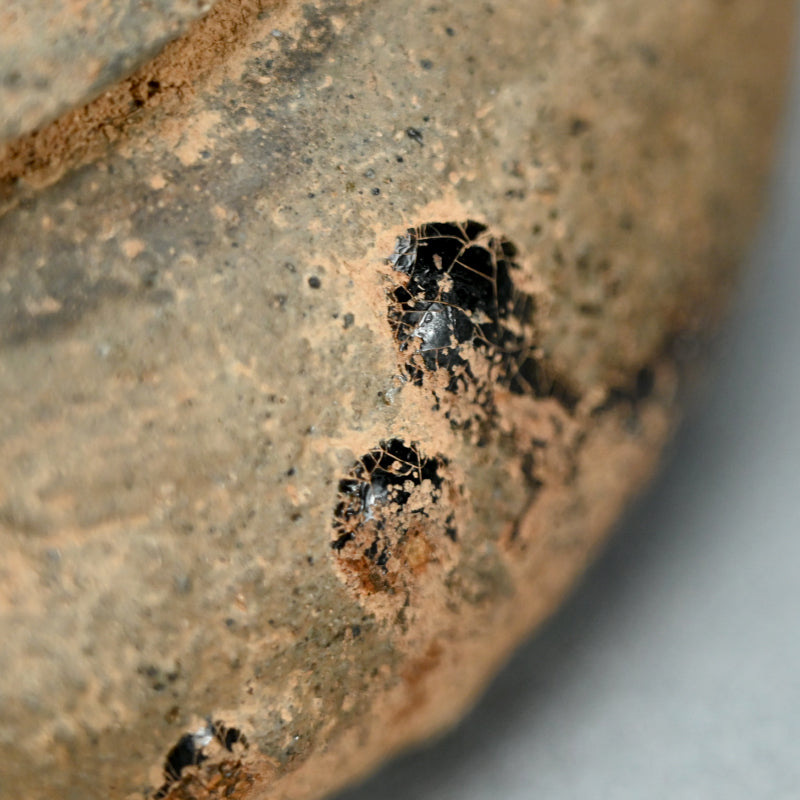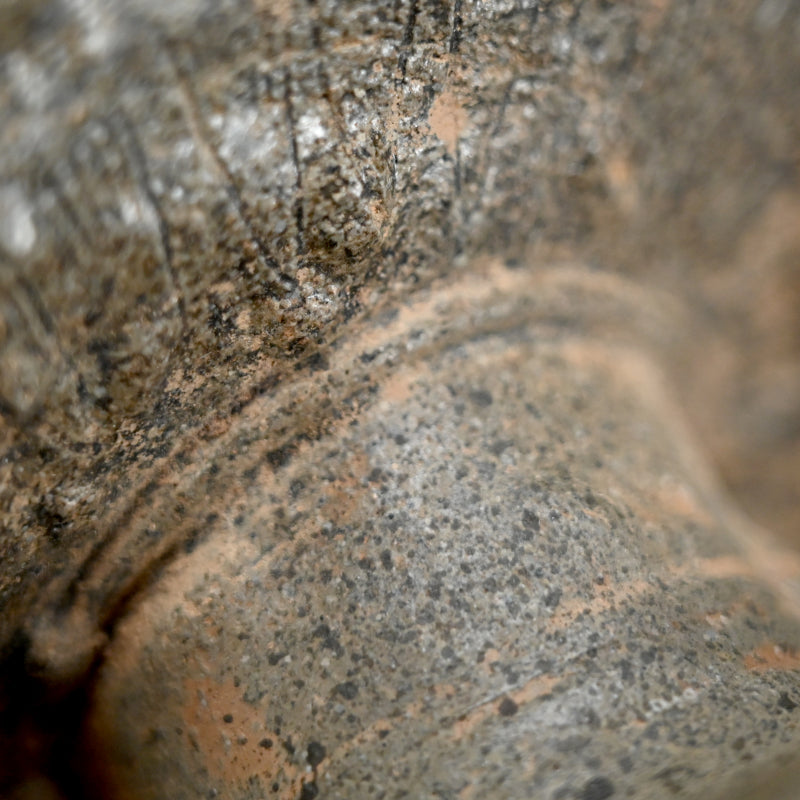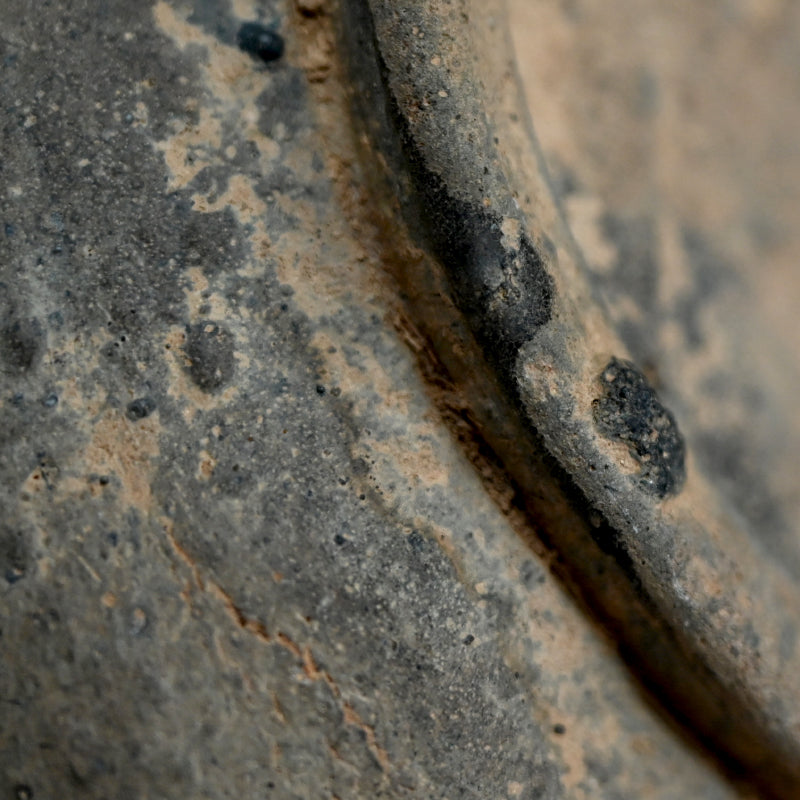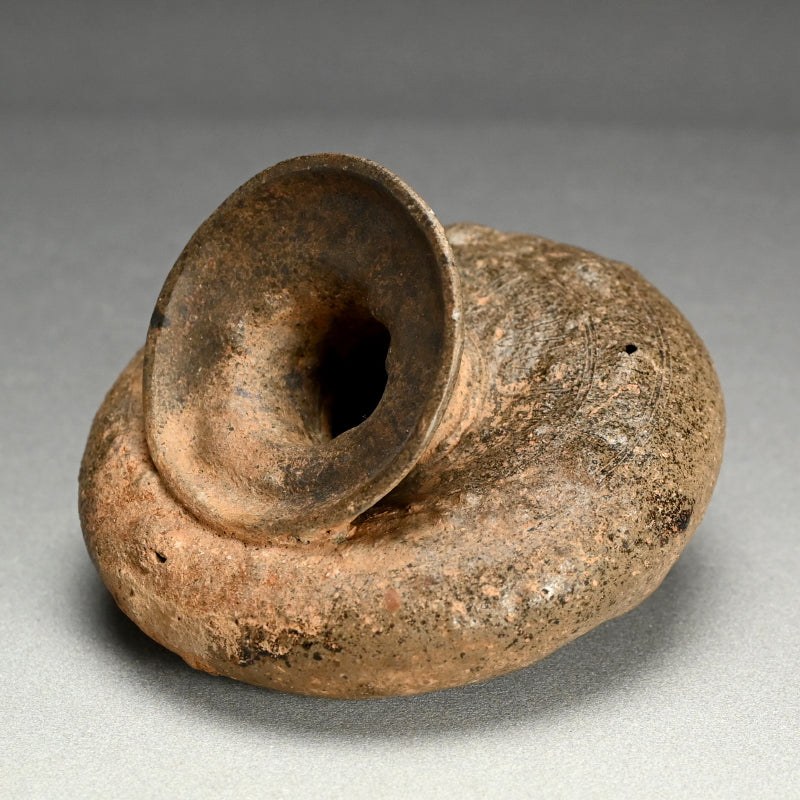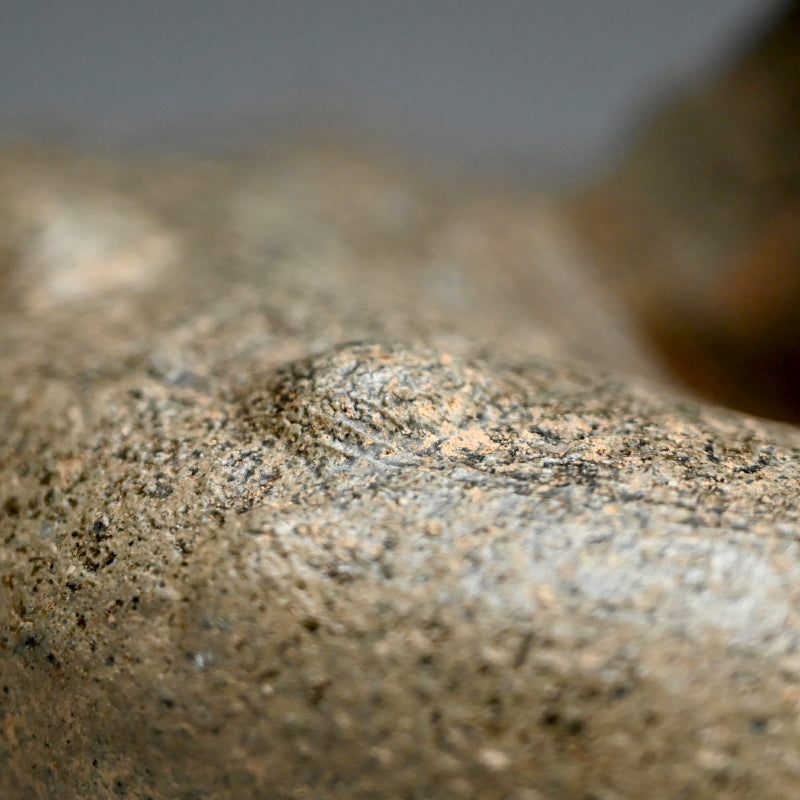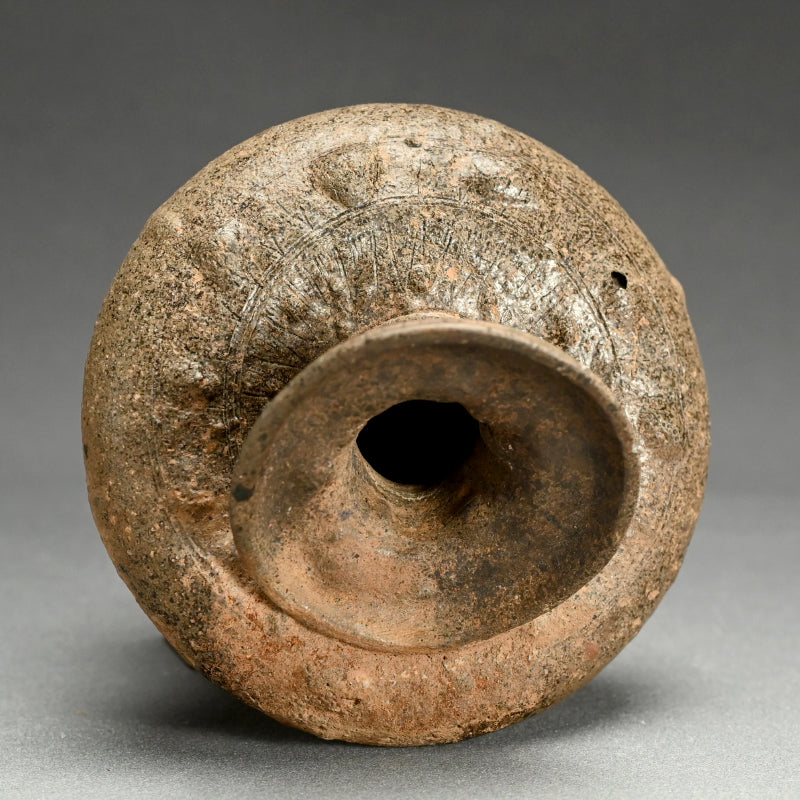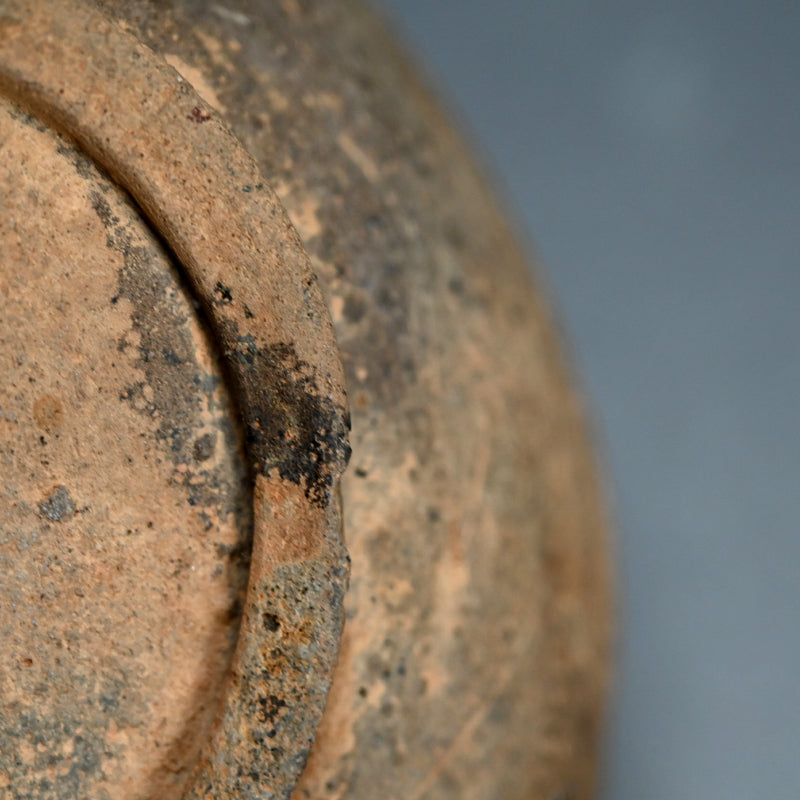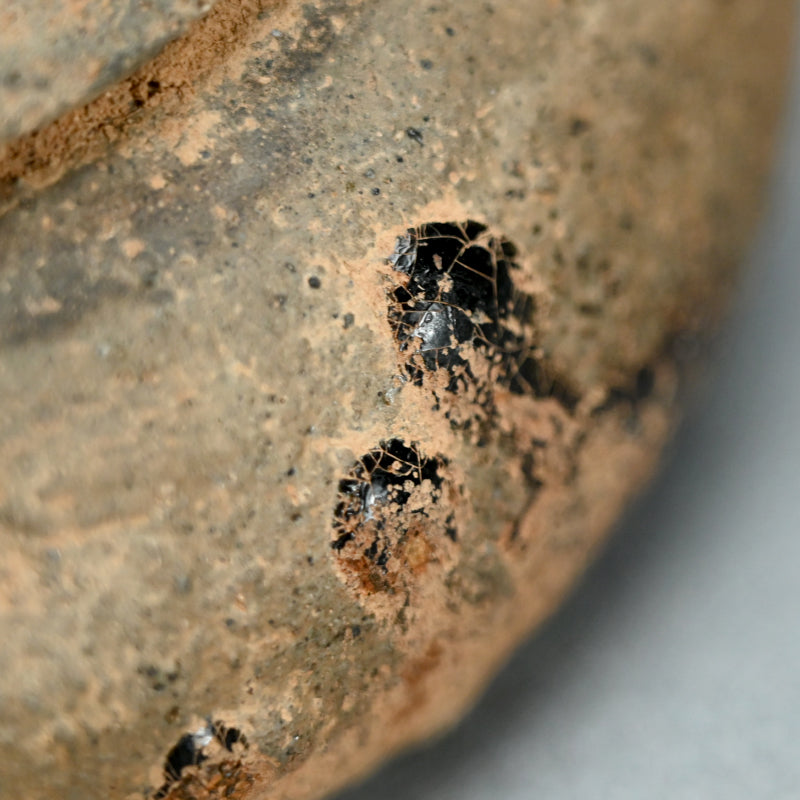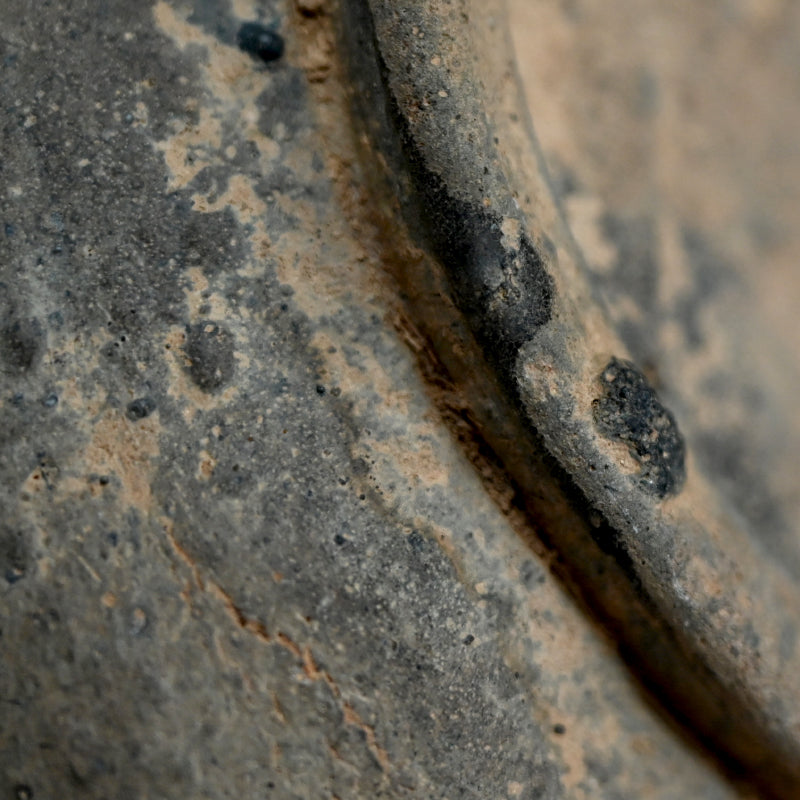1
/
of
17
Published Tokoname Hetari Tsubo
Published Tokoname Hetari Tsubo
Item Code: K674
Regular price
¥268,100 JPY
Regular price
Sale price
¥268,100 JPY
Unit price
/
per
Tax included.
Couldn't load pickup availability
A collapsed bottle from the early years of the Tokoname Kilns dating from the Kamakura to Nanboku-cho periods (12th to 15th centuries) featured in the special Taiyo Art Magazine Close-up on the six ancient kilns. It is 18 cm (7 plus inches) diameter, 13 cm (more than 5 inches) tall and in fine original condition, enclosed in an old red-lacquered wooden box.
Tokoname pottery from modern day Aichi Prefecture, is one of Japan’s Six Ancient Kilns (Nihon Rokkoyō), with a history dating back to the Heian period (794–1185). Initially, Tokoname potters produced large, durable storage jars and water vessels, utilizing locally abundant iron-rich clay and high-temperature firing techniques. The region's extensive use of anagama (single-chamber) and later noborigama (climbing) kilns contributed to its flourishing as a major ceramics center. During the Kamakura (1185–1333) and Muromachi (1336–1573) periods, Tokoname ware was exported all over the Japanese archipelago, and served as the prototype for pottery from most of the other ancient kilns.
Tokoname pottery from modern day Aichi Prefecture, is one of Japan’s Six Ancient Kilns (Nihon Rokkoyō), with a history dating back to the Heian period (794–1185). Initially, Tokoname potters produced large, durable storage jars and water vessels, utilizing locally abundant iron-rich clay and high-temperature firing techniques. The region's extensive use of anagama (single-chamber) and later noborigama (climbing) kilns contributed to its flourishing as a major ceramics center. During the Kamakura (1185–1333) and Muromachi (1336–1573) periods, Tokoname ware was exported all over the Japanese archipelago, and served as the prototype for pottery from most of the other ancient kilns.
Share
